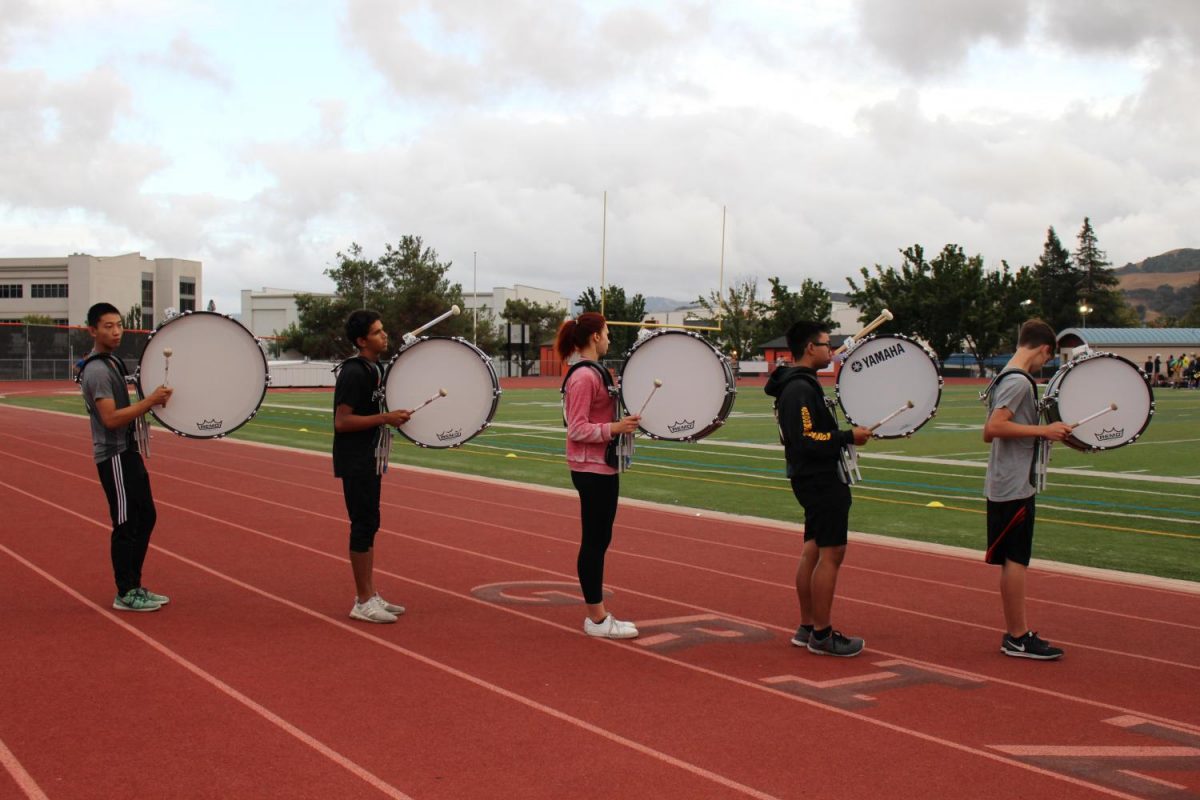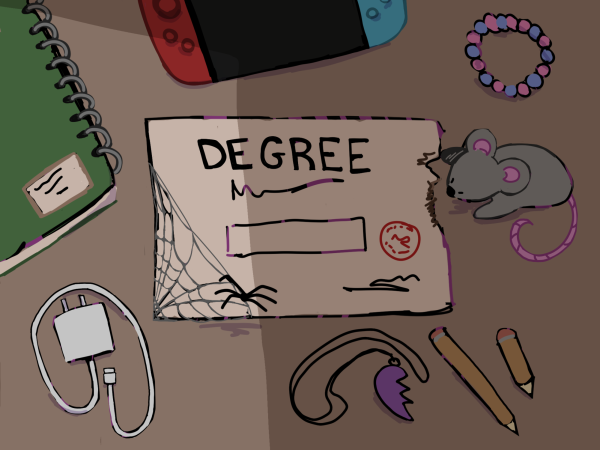Should band and dance be sports?
Cal High’s marching band drummers practice in formation for the upcoming performances of the year.
It’s time to overhaul our outdated definition of sports.
When the word sports is mentioned, most people think of football players. Those on the sidelines – marching band, color guard and dance – are still not considered sports. Cheerleading wasn’t considered a sport until this year, but that finally changed and is a step in the right direction.
So what exactly makes football and golf a sport, and not marching band, color guard or dance?
Oxford Dictionary defines a sport as an activity that involves physical exertion and skill with competition against others for entertainment.
Despite the fact that marching band, color guard and dance all meet the criteria of a sport, these activities are never thought of as sports.
This needs to change.
Critics often argue that the sideline activities are too artistic and subjective. But they fail to recognize that popular Olympic sports such as gymnastics and figure skating are also based on the opinions of judges.
Even boxing, regarded as a one of the most masculine sports, is scored subjectively by a judge on a 10-point scale.
Critics also argue that activities such as marching band, color guard and dance do not require as much physical exertion or skill as a “serious sport.”
But this couldn’t be further from the truth.
“The injury rate [for ballet dancers] is about what it is in professional football,” Dr. James Garrick, one of the nation’s pioneers in sports medicine, stated in a Los Angeles Times article.
“Sideline sports” aren’t just entertainment at halftime. They also compete, fulfilling the criteria that sports need competition.
At school, both the color guard team and marching band compete in numerous championships throughout the year. Dancers often compete outside of school as well.
Contrary to what outsiders think, competitions for these sports have a rigorous scoring scale and have rules, much like any other sport.
Another argument critics make is that these activities are unpopular as sports, so they should remain as just sideline entertainment.
But the sheer number of championships that exist for all three activities at the local, state, national and international levels should indicate the huge amount of popularity they enjoy.
Clouded by bias, many people fail to recognize the merits of marching band, color guard and dance as sports.
These athletes deserve as much attention and respect for their dedication as other athletes, but they are dismissed as simply being entertainment.
With cheer officially recognized as a sport this year, perhaps it’s time for the “sideline sports” to finally join the game.



